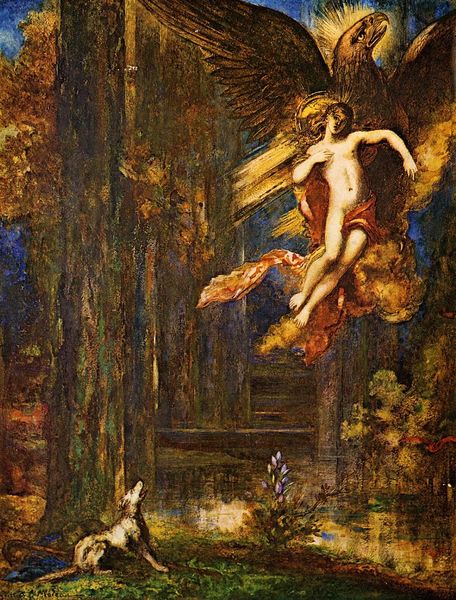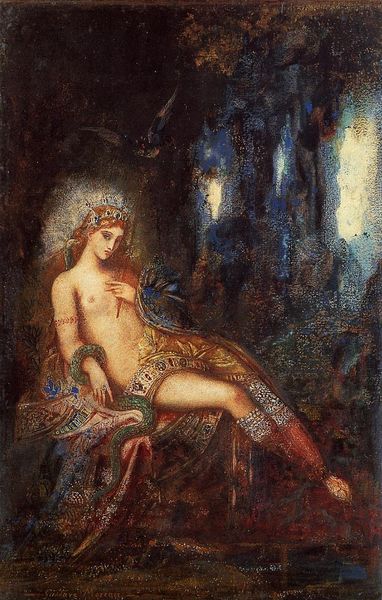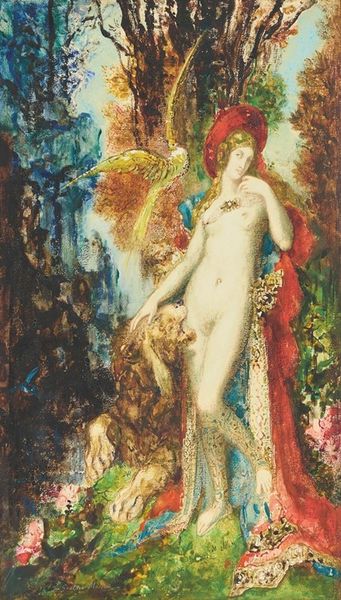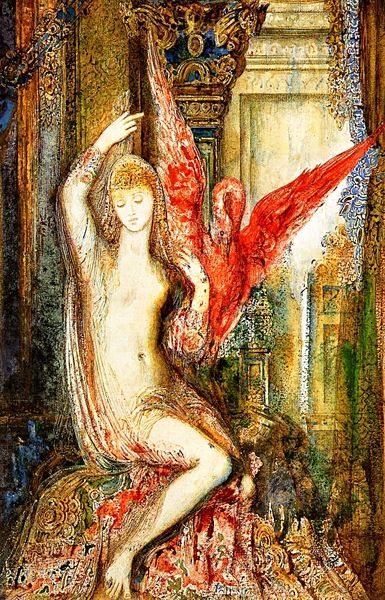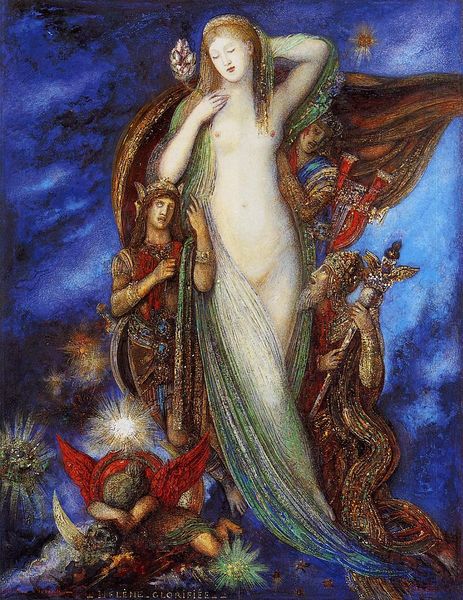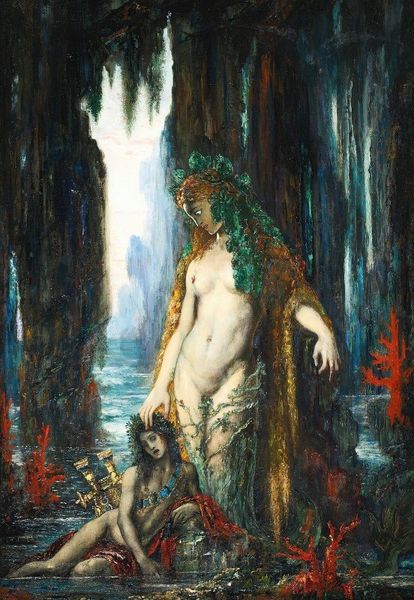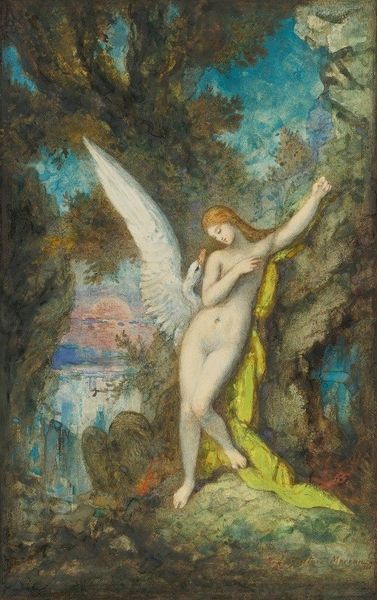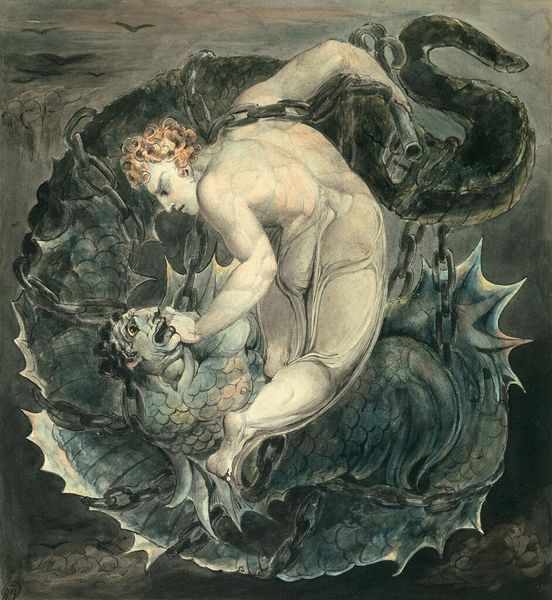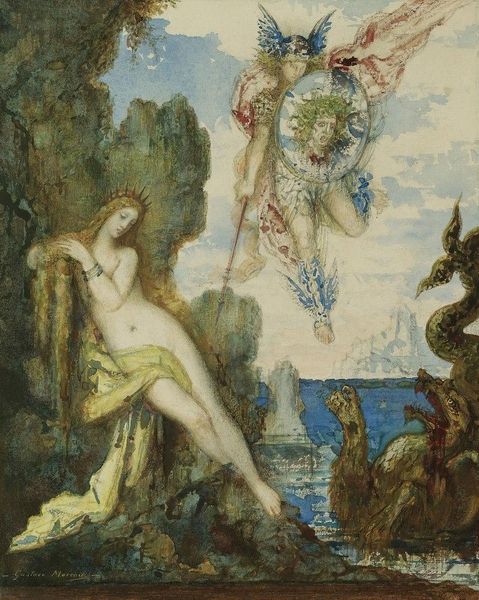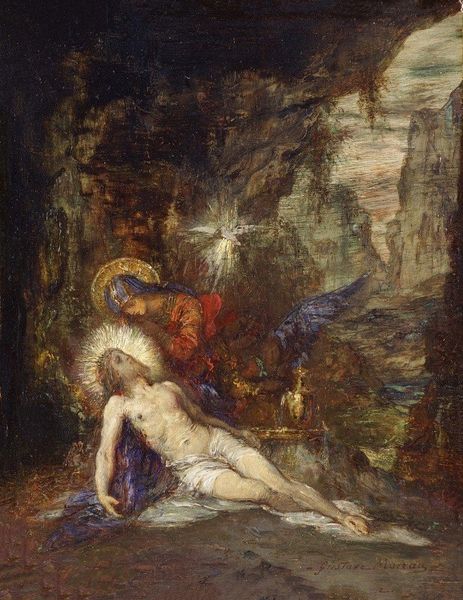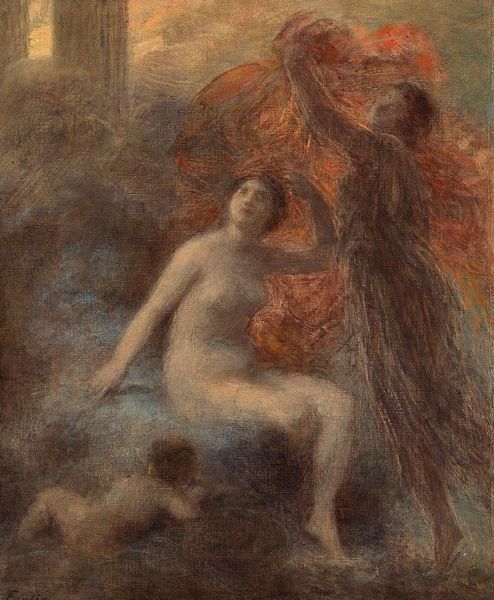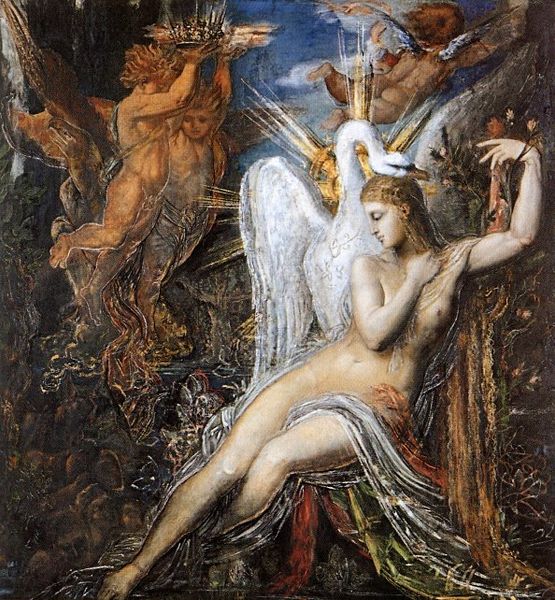
Copyright: Public domain
Curator: Here we have Gustave Moreau's "Fairy and Griffon," created in 1876 using oil paint. What are your first thoughts when viewing it? Editor: Well, the subdued palette and somewhat obscured forms definitely create an air of mystery and, perhaps, subdued grandeur. It's almost dreamlike. What elements of the painting strike you most? Curator: Note the structural arrangement Moreau employs. The fairy, centrally positioned, forms the apex of a triangular composition, grounded by the griffin below. How does this ordering influence your interpretation? Editor: I suppose it draws my eye immediately to the fairy, suggesting she holds a position of dominance, or at least significance within the piece. Does the palette used -the muted blues, browns, and yellows- convey meaning too? Curator: Certainly. Moreau masterfully employs color not to imitate nature but to evoke a feeling. Consider how the cool blues behind the fairy contrast with the warmer tones surrounding the griffin. What tension does this create? Editor: It feels like there's a division between the ethereal and the earthly. I never thought of colour itself as conveying form and space. So, without a narrative, the fairy isn't necessarily a good character and the Griffin isn't bad! Curator: Precisely. Disengaging the forms and tones of meaning through historical context encourages us to find inherent connections. What could have been overlooked by solely evaluating based on theme is highlighted when viewing the structures first! Editor: It's remarkable how concentrating on visual construction alone opens a whole new avenue for understanding. Thanks so much! Curator: The pleasure was mine. A strict observance of structuralist criticism yields surprising results; it helps to focus observation by decoding inherent and tangible forms.
Comments
No comments
Be the first to comment and join the conversation on the ultimate creative platform.
